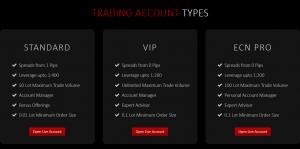Fibonacci Retracements Explained How to Use This Technical Indicator

However, they are more effective when viewed on longer timeframes, such as weekly or monthly charts. The Fibonacci sequence can be used to approximate the golden ratio, as the ratio of any two consecutive Fibonacci numbers is very close to the golden ratio of 1.618. As an illustration, a stock begins at $10 and soars to $15 before slipping back to $12.5.

These Fibonacci numbers, which frequently appear in the physical world, also have an important role in financial markets and in analyzing assets’ price movements. As a result, many traders often use them to analyze price action and find successful trades. Like regular support and resistance levels, you can think of the Fibonacci levels as areas of interest rather than a place where the price will reverse with pip-perfect precision. That’s why candlestick and chart patterns are commonly used in conjunction with Fibonacci retracements. Hammers, shooting stars, triangles, and wedges can all provide you with extra confidence that these levels are likely to hold. In the example above, you can see how the Fibonacci sequence Bitcoin chart, where it allows you to take profits from price swings.
Fibonacci Levels Used in the Financial Markets
These are then applied to the chart to try and figure out potential hidden levels of support or resistance in the market. When the market drops back to 38.2% of its previous rise (the first major Fibonacci retracement), traders will check to see if any buyers come in. If this 38.2% level gets broken, then the expectation is for the 50% retracement to be the next target. If the market slides through that 50% retracement level, then traders will look to see if the market finally stops its decline when it has retraced 61.8% of the prior move. For most Fibonacci followers, if it breaks through that 61.8% level, it means that the market direction is going back to where it started. Fibonacci retracement levels often mark retracement reversal points with surprising accuracy.
- The first screenshot below shows the Daily timeframe of the current EUR/USD chart.
- You will often find traders who only believe in the concept of technical analysis and others who believe in the concept of fundamental analysis.
- However, the theories underlying these two indicators are entirely different.
Once the price breaks above or below one of the levels, you will switch to the next strategy – the breakout trading strategy. There are many strategies to use in combination with Fibonacci retracement lines. Basically, you can combine Fibonacci ratios with any strategy you wish to implement in the markets – swing trading strategy, day trading, scalp trading strategy, and even position trading. The two additional levels of 50% and 76.4% are added by traders, even though they aren’t provided by the Fibonacci formula. This is because, historically, price trends tend to find support and resistance at these levels as well. Consequently, adding them to the Fibonacci levels on your chart can provide further insight for market entries or exits.
A Comprehensive Guide to Fibonacci Retracements
The retracement levels are a powerful tool that can be applied to all timeframes, including day trading and long-term investing. Fibonacci numbers also play a crucial role in the Elliott Wave principle, a technical analysis tool https://forexhero.info/what-is-tenkofx/ used to identify market cycles. The tool can be used across many different asset classes, such as foreign exchange, shares, commodities and indices. Every trader, especially beginners, dreams of mastering the Fibonacci theory.

Now that you know how to read Fibonacci retracement in a chart, let’s continue by showing you how to trade with Fibonacci retracement. The best way to trade Fibonacci retracement is by observing the retracement levels closely. This is because Fibonacci retracement trading can be used on both short and long trading intervals. That said, crypto Fibonacci retracements on longer timeframes will present stronger trend indicators than those on shorter timeframes. There are multiple ways to incorporate Fibonacci retracement levels in your trading strategy. The screenshots below show a sudden bullish move in a larger uptrend.
Maximizing Profits While Minimizing Risk in Day Trading
After selecting the tool, you start from the swing low point and drag the levels to the highest point in an uptrend and vice versa in a downtrend. Okay, you might be thinking, this is all very interesting, but what does it have to do with trading? In the 1970s, some investors thought of applying the Fibonacci sequence to the stock market. They had a theory that stock patterns might follow the natural ecosystem.
EUR/CHF and USD/CHF Weekly Chart Outlook – Action Forex
EUR/CHF and USD/CHF Weekly Chart Outlook.
Posted: Wed, 07 Jun 2023 07:53:12 GMT [source]
In other words, we’re identifying where the price might land after it has reached a peak and started declining. To use the Fibonacci retracement tool well, you should mark the key levels well. In most cases, the price will always find resistance when it hits the noted retracement levels. This is one of the most used indicators in technical analysis, which even professional traders cannot afford to use. In this article, we will tell you how to use the Fibonacci retracement to increase your chances of making a profit in trading. There are some basic rules that need to be followed when drawing Fibonacci retracements, but there is also a certain degree of discretion present.
Fidelity Smart Money℠
There might be some retracements within a trend, after which the price returns back on track. In this case, Fibonacci retracement levels can show you when the price is likely to encounter support and resistance and continue moving with the general trend. You can use this information to find the most suitable time to enter a trade and even set up automatic entry points at the retracement levels. The Fibonacci ratios are percentages of a chosen price range that determine the support and resistance levels of a price movement. The Fibonacci ratios were derived from the Fibonacci numbers – a sequence of numbers where each number is the sum of the previous two. If you divide a Fibonacci number by the next number, the result will be 0.618 (61.8%).
When using Fibonacci patterns while trading, these ratios are typically expressed as percentages, such as 38.2%, 50%, and 61.8%. While we already covered Fibonacci retracement strategy earlier, we haven’t yet touched upon the Fibonacci retracement vs extension notion. Fibonacci extensions are very useful for determining exit positions when the price breaks out of the trend, beyond 100%. To obtain the ratios for Fibonacci extension vs retracement, we simply add the usual ratios to 100%, which gives us 1.236, 1.382, 1.5, 1.618, and so forth. The price reaching below 0.382 ($51,463) could be a signal that the downtrend continues.
How to trade with Fibonacci
Fibonacci retracement levels can also be used to identify resistance levels. In this case we’re trying to predict where the price may retrace to after a move down. The retracement levels are spread between the 1 and the 0 (the levels are 0.236, 0.382, 0.5, 0.618 and 0.786). When using Fibonacci retracement levels to identify support, we are attempting to predict where the price may retrace to after moving up.
- Many traders make the mistake of buying oversold stocks or selling overbought stocks and suffer financial losses as a result.
- To use the Fibonacci levels properly, we must first learn how to identify the co-called swing highs and swing lows.
- For example, on the EUR/USD daily chart below, we can see that a major downtrend began in May 2014 (point A).
- The sequence starts with zero and one and continues by adding the previous two numbers.
- If a retracement is taking place within a trend, you could use the Fibonacci levels to place a trade in the direction of the underlying trend.
This tool is based on the idea that prices will often repeat a predictable portion of a move, after which they will continue to move in the original direction. Fibonacci retracement levels are calculated using Fibonacci sequence ratios. The most commonly used ratios are 23.6%, 38.2%, 50%, 61.8% and 100%.
Which timeframe is best for Fibonacci retracement?
The best time frame to identify Fibonacci retracements is a 30-to-60-minute candlestick chart, as it allows you to focus on the daily market swings at regular intervals.
